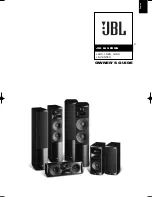
JABLOTRON
ALARMS
a.s.
Pod
Skalkou
4567/33
46601
Jablonec
n.
Nisou
Czech
Republic
www
.jablotron.com
||
|
JA-14K(R) Security System Control Panel
17 / 72
MNX22101
6.1 Installation of a JA-111R radio module
1. The module can be placed in the control panel cover or it can be installed elsewhere in the building and
connect it with a BUS cable. If the module is installed in the control panel cover, connect it to the internal
BUS connector using a flat cable equipped with RJ connectors.
Note: The JA-14KR kit has a built-in JA-111R module in the control panel box next to the transformer in a
special plastic holder.
2. If the control panel is installed in a place with poor GSM signal reception, the GSM module increases
its transmission power, which can have a negative impact on the radio module communication range.
In such a case you are recommended to place the radio module outside the control panel, namely at least
2 m from it, where it will not be negatively influenced anymore and will have higher-quality radio reception
from the devices, which will allow for longer ranges and consequently installation distances. It is necessary
to put the JA-111R installed in the control panel box inside a PLV-111R installation box (it is not supplied
with a JA-14K kit , it has to be ordered individually).
The RJ BUS connector on the control panel board is exclusively
designed for the connection of a radio module installed inside the
control panel housing.
3. You can cover a larger area with radio signal by installing up to 3 JA-111R radio modules in their own plastic
housing in different places (e.g. each one on a different floor). Signals from a wireless device (hereinafter
device) can be received by more radio modules simultaneously. The control panel communicates in a cycle
with individual radio modules, so it will get information sent by a device from the radio module that was the
first to receive an intact signal and reacts to it. Then, it will not get the same information from the other radio
modules any more even though it was received with a stronger signal. Thus, it may happen that signals from
the same unidirectional device may exhibit quite different data in N-Link / System settings / Diagnostics
during repeated measurements depending on from which module the signal was taken. As regards to
bidirectional devices, the control panel “reserves” the once used channel (communication with the first radio
module) and after that it communicates with the particular device via this radio module only (shown in
Diagnostics, the Channel column) until the device stops responding. Then, it looks for the connection signal
in the other radio modules. If you need to verify the quality of connection of individual devices to individual
radio modules, check it by the RF signal graph in the N-Link SW (button on the upper toolbar). There select
the radio module for which communication should be checked and the activate devices you want to check.
A graph of radio communication shows the RF signal strength measured by a specific radio module. It is also
possible to have several RF signal windows open so you can very simply monitor the RF coverage in that
premises.
4. Install a radio module vertically on a wall. It must not be situated near objects that shield or interfere with
communications (metals, electronic devices, cables, pipelines etc.).
5. After switching the system on you must
enroll the radio modules first.
It is only then that you can enroll
wireless, see following chapter.
Recommendation: It is recommended to enroll wireless devices to the system when they are placed in their
final position. This installation procedure is not so comfortable but it helps you to achieve better and realiable
radio reception at the radio module. The radio module has an algorithm which ensures a “minimum signal”
from device measured during service mode. That gives a reserve when radio condition gets worse in full
operation mode (for instance when a building is re-configured, industrial interference, etc..). See more
detailed information in the EN 50131-5-3 standard.
6.2 Installation of wireless devices – enrollment mode
Wireless devices have to be enrolled to the system individually. The enrollment procedure can be performed in
Enrollment mode only using a PC with installed N-Link software. See chapter 8.4.1 Enrolling and erasing
















































